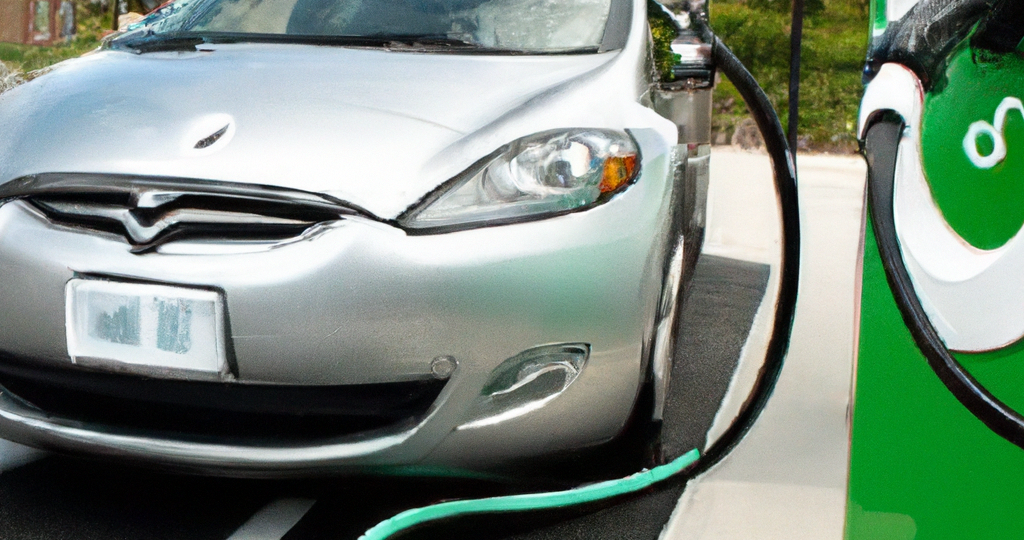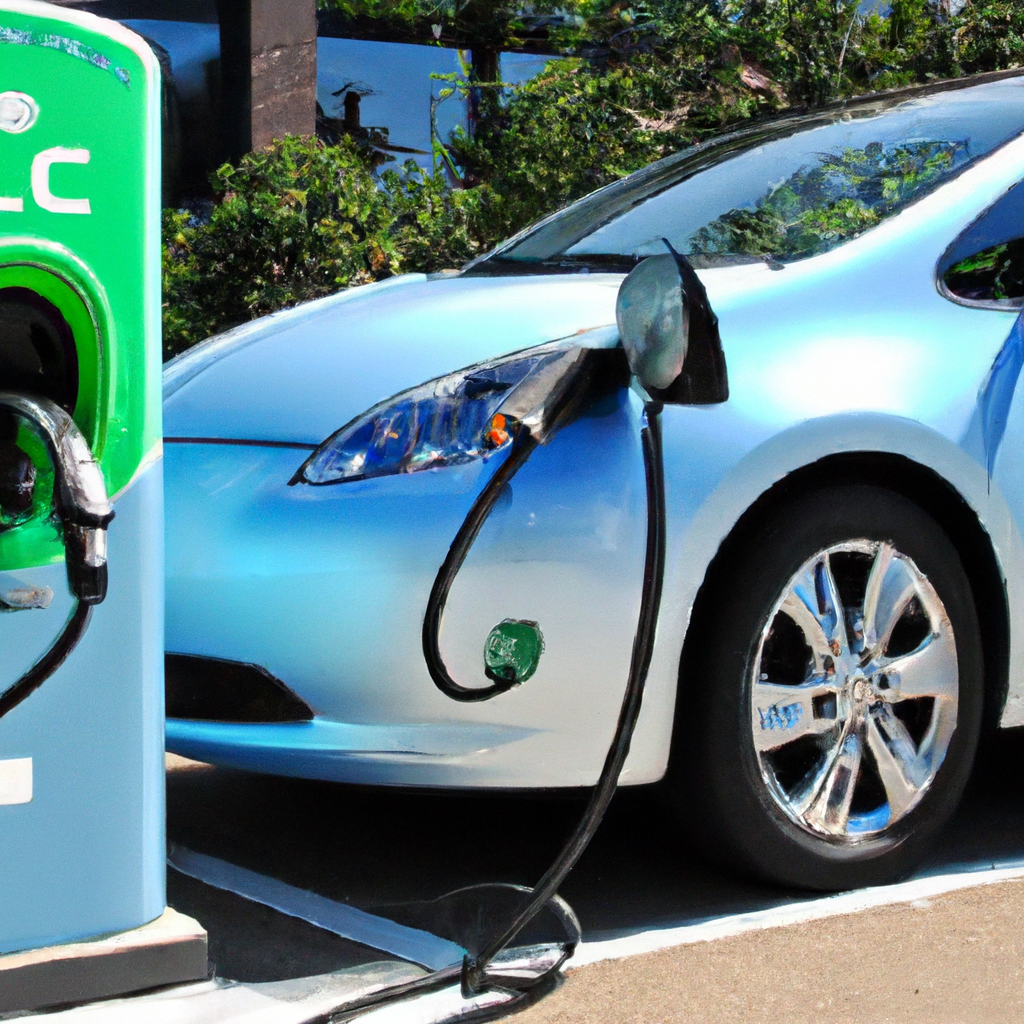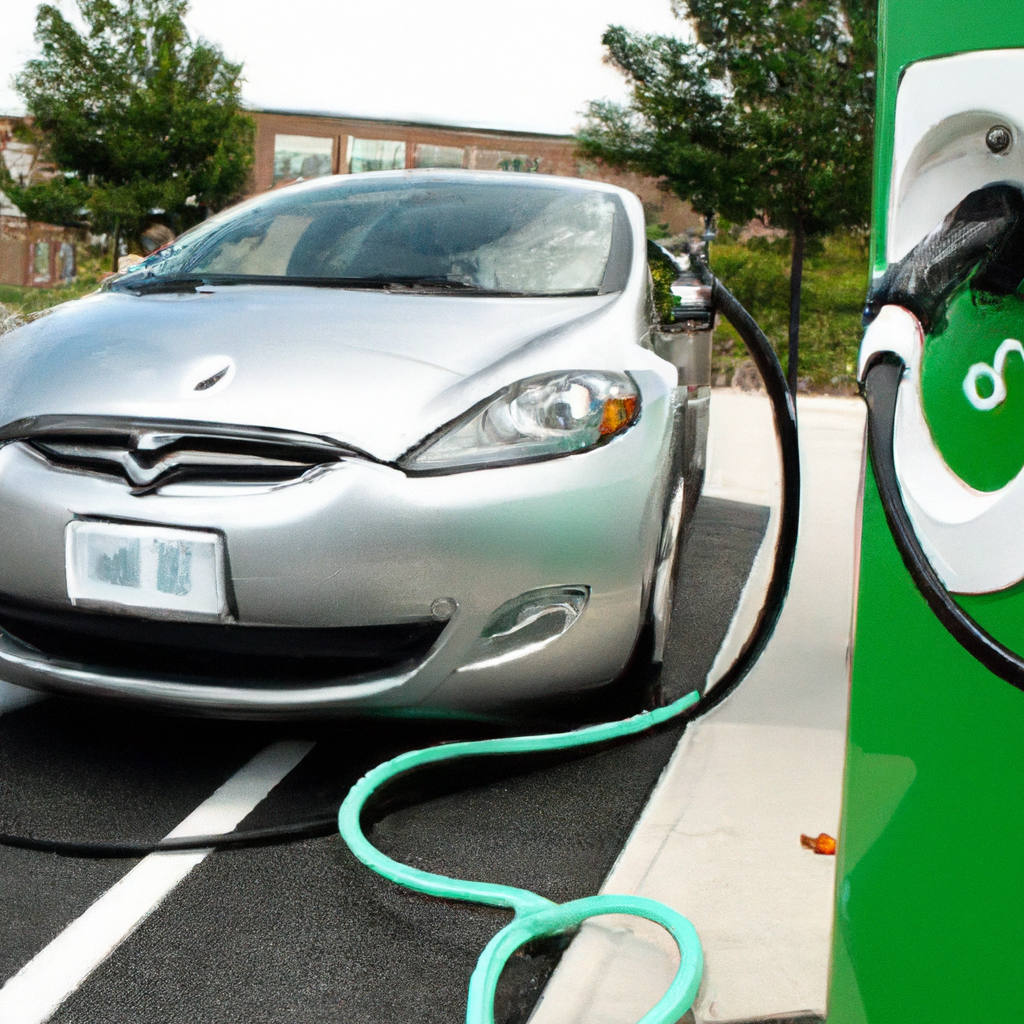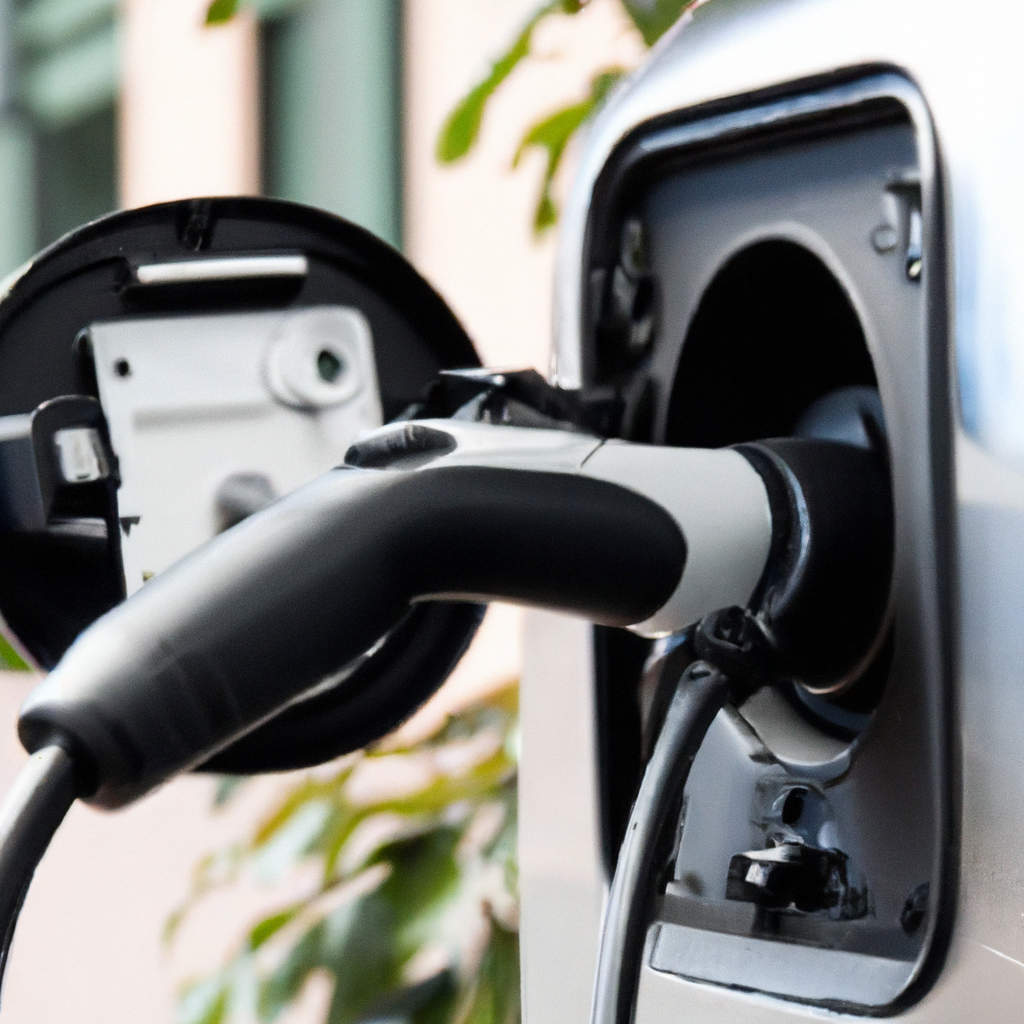EV Chargers And Public Policy: Government Incentives And Regulations
October 23, 2023 | by Jacob Kang

Have you ever wondered how government incentives and regulations play a significant role in the widespread adoption of electric vehicle chargers? In this article, we’ll explore the intricate relationship between EV chargers and public policy. By understanding the various incentives provided by governments and the regulations put in place to govern EV charging infrastructure, you’ll gain insight into the importance of these factors in the transition to a greener transportation system. Join us as we delve into the world of EV chargers and uncover the impact of government initiatives on shaping our electric vehicle future.
Government Incentives for EV Chargers

A. Financial incentives
When it comes to encouraging the adoption of electric vehicles (EVs) and expanding the charging infrastructure, financial incentives play a crucial role. Governments around the world have recognized the importance of offering financial incentives to individuals and businesses to install EV chargers. These incentives can come in the form of grants, subsidies, or other financial assistance programs. By providing financial support, governments aim to make the investment in EV charging infrastructure more affordable and attractive for individuals, businesses, and communities.
B. Tax credits and rebates
Another powerful tool in the government’s arsenal to promote EV charger deployment is the provision of tax credits and rebates. These incentives can be offered to both EV charger manufacturers and individuals who purchase and install chargers. By reducing the upfront costs, tax credits and rebates make EV chargers more accessible and help drive the adoption of electric vehicles. Individuals and businesses can receive a percentage of their EV charger costs back as a tax credit or rebate, providing a strong economic incentive to invest in charging infrastructure.
C. Grants and funding programs
To support the development of EV charging infrastructure, governments often establish grants and funding programs. These initiatives provide financial assistance to local governments, businesses, and non-profit organizations for installing charging stations in public spaces, workplaces, and other high-traffic areas. Grants and funding programs help bridge the financial gap and enable more communities to invest in EV chargers, making electric vehicle ownership more convenient and accessible.
The Importance of Government Incentives
A. Encouraging EV adoption
Government incentives for EV chargers are essential for encouraging the wider adoption of electric vehicles. Without adequate charging infrastructure, potential EV owners may be hesitant to make the switch from gasoline-powered vehicles. By providing financial incentives, governments help reduce the barriers to entry and make EV ownership more affordable and convenient for individuals. This, in turn, leads to increased EV adoption rates, reducing greenhouse gas emissions and promoting a cleaner, more sustainable future.

B. Supporting private investment
Government incentives also play a crucial role in supporting private investment in the EV charging industry. By offering financial support and tax incentives to charger manufacturers and installers, governments encourage private businesses to enter the market and invest in the development and installation of charging infrastructure. This private investment helps create a competitive market for EV chargers, driving innovation, reducing costs, and expanding charging options for electric vehicle owners.
C. Promoting sustainable transportation
By incentivizing the installation of EV chargers, governments contribute to the overall promotion of sustainable transportation. Electric vehicles offer significant environmental benefits over traditional gasoline-powered vehicles, including reduced greenhouse gas emissions and improved air quality. However, without a widespread and accessible charging network, the full potential of EVs cannot be realized. Government incentives for EV chargers help build the necessary infrastructure to support sustainable transportation and reduce dependence on fossil fuels.
Challenges in Implementing Incentive Programs
A. Funding limitations
One of the challenges in implementing incentive programs for EV chargers is the limitation of funding. Providing financial incentives requires a significant amount of capital, and governments need to allocate sufficient resources to support these programs. However, with competing priorities and constrained budgets, funding limitations can hinder the scale and effectiveness of incentive programs. Governments must carefully balance their financial commitments to ensure the sustainable growth of the EV charging infrastructure while addressing other critical needs in the community.
B. Administrative complexities
Implementing incentive programs for EV chargers can also involve administrative complexities. Governments need to establish clear guidelines and processes for accessing incentives, which can be time-consuming and bureaucratic. It is essential to streamline the application and approval procedures to make it easier for individuals and businesses to participate. Additionally, effective communication and outreach efforts are necessary to ensure that potential beneficiaries are aware of the available incentives and are able to navigate the application process successfully.

C. Fairness and equity concerns
Another challenge that governments must address when implementing incentive programs is fairness and equity. It is crucial to ensure that the benefits of incentives are distributed equitably among different communities and socioeconomic groups. This means considering factors such as geographical distribution of charging infrastructure, accessibility for low-income individuals, and underserved communities. Governments should strive to design incentive programs that prioritize equity, ensuring that everyone has equal opportunity and access to the benefits of EV charging infrastructure.
Responsibility of Local Governments
A. Zoning regulations
Local governments play a significant role in promoting the deployment of EV chargers through zoning regulations. By implementing appropriate zoning policies, such as designating areas for charging station development, local governments can incentivize private developers and businesses to invest in charging infrastructure. Zoning regulations should consider factors such as proximity to major roadways, public transportation hubs, and commercial centers to ensure convenient access to charging stations for EV owners.
B. Building codes and permits
In conjunction with zoning regulations, local governments can support EV charger deployment by incorporating requirements and incentives for charging infrastructure into building codes and permits. By making it mandatory or providing incentives for new construction projects to include EV charging capabilities, local governments actively encourage the expansion of charging infrastructure. This proactive approach helps ensure that future developments are equipped with the necessary infrastructure to accommodate electric vehicles.
C. Parking infrastructure
Local governments also have a responsibility to promote EV charger deployment through the management of parking infrastructure. By designating parking spaces specifically for electric vehicles and installing charging stations in public parking lots, local governments can increase the accessibility of charging infrastructure and encourage EV adoption. Furthermore, partnering with private parking lot operators and businesses to incentivize the installation of charging stations can help expand the charging network and provide more charging options for electric vehicle owners.
National-Level Regulations on EV Charging

A. Standardization of charging infrastructure
To promote the widespread adoption of EV chargers, national-level regulations are necessary to establish standardization in charging infrastructure. Standardization ensures that chargers are compatible across different makes and models of electric vehicles, simplifying the charging experience for EV owners. National governments should work together with industry stakeholders to develop and implement common standards for charging connectors, communication protocols, and interoperability to ensure a seamless charging experience for all electric vehicle owners.
B. Safety and quality standards
Another important aspect of national-level regulations is the establishment of safety and quality standards for EV chargers. Governments play a crucial role in ensuring that charging infrastructure meets the required safety standards to protect both users and the electrical grid. By setting clear guidelines for charger manufacturers and installers, governments can ensure that only safe and reliable charging equipment is deployed. Additionally, governments can implement certification and inspection processes to monitor the adherence to safety standards and maintain the quality of charging infrastructure.
C. Interoperability of charging systems
National-level regulations should also address the issue of interoperability among different charging systems. Interoperability ensures that electric vehicle owners can use any charging station, regardless of the charging network operator, without the need for multiple memberships or specialized payment methods. Governments can work with industry stakeholders to establish interoperability standards and ensure that EV owners have easy access to a wide range of charging stations, regardless of the operator. This interoperability enhances the user experience and promotes the growth of the EV charging infrastructure.
International Collaboration on EV Charger Regulations
A. Global harmonization efforts
Given the global nature of the electric vehicle market, international collaboration is essential in establishing harmonized regulations for EV chargers. By working together, countries can avoid fragmented and conflicting standards that may impede the growth of the EV charging infrastructure. International organizations, such as the International Electrotechnical Commission (IEC) and the International Organization for Standardization (ISO), play a pivotal role in facilitating global harmonization efforts by developing common standards and guidelines that can be adopted by different countries.

B. Sharing best practices
International collaboration also provides an opportunity for countries to share best practices and lessons learned in the deployment of EV chargers. By exchanging knowledge and experiences, countries can benefit from each other’s successes and challenges, further accelerating the development of charging infrastructure. Sharing best practices involves identifying successful incentive programs, overcoming administrative obstacles, and addressing equity concerns. Collaborative platforms, such as international conferences and working groups, can facilitate this knowledge exchange and foster innovation in the EV charging industry.
C. Addressing cross-border challenges
Electric vehicle charging infrastructure should not be limited by national borders. International collaboration is vital in addressing cross-border challenges and facilitating seamless EV charging experiences for drivers traveling across different countries. Governments can work together to establish cross-border payment systems, roaming agreements, and standardization of protocols to ensure that EV owners can access charging infrastructure wherever they go. By removing barriers to cross-border charging, international collaboration enhances the convenience and viability of electric vehicles as a sustainable mode of transportation.
The Role of Utilities in EV Charger Deployment
A. Integration of charging infrastructure with the grid
Utilities play a critical role in the successful deployment of EV chargers by ensuring the integration of charging infrastructure with the electrical grid. As the demand for electricity increases due to the growing number of electric vehicles, utilities need to upgrade their infrastructure and implement smart grid technologies to support the load. By working closely with charger manufacturers, installers, and vehicle manufacturers, utilities can plan for the increased demand and ensure a reliable and stable supply of electricity to support the charging needs of EV owners.
B. Time-of-use tariffs
To maximize the utilization of existing electrical infrastructure and incentivize off-peak charging, utilities can implement time-of-use tariffs. These tariffs offer different rates for electricity consumption based on the time of day, encouraging EV owners to charge their vehicles during periods of low demand. By shifting the demand to off-peak hours, utilities can better manage the load on the electrical grid and avoid potential strain on the system. Time-of-use tariffs provide a win-win solution for utilities and EV owners, offering cost savings for the consumer and optimized grid utilization for the utility.
C. Demand response programs
Utilities can also support EV charger deployment through the implementation of demand response programs. These programs encourage electric vehicle owners to participate in grid management by allowing utilities to remotely control and adjust charging rates during periods of peak demand. By offering financial incentives or other rewards for participation, utilities can effectively manage the charging load and ensure grid stability. Demand response programs not only help balance the demand on the electrical grid but also provide cost savings for both the utility and the EV owner.
Public-Private Partnerships for EV Chargers
A. Collaborative funding initiatives
Public-private partnerships (PPPs) play an integral role in financing the deployment of EV chargers. By leveraging the resources and expertise of both the public and private sectors, PPPs can address the funding limitations often associated with EV charger infrastructure. Governments can provide financial support and incentives, while private businesses contribute their technical know-how and market understanding. Collaborative funding initiatives, such as joint grant programs or co-investment models, enable governments and businesses to share the financial burden and accelerate the development of charging infrastructure.
B. Joint infrastructure development
Public-private partnerships also facilitate joint infrastructure development for EV chargers. By pooling resources and expertise, governments and private businesses can collaborate on planning, designing, and constructing charging stations. This shared approach ensures that charging infrastructure meets both public and private needs, leading to a more coordinated and efficient deployment process. Joint infrastructure development also enables better utilization of public spaces, such as highways, parking lots, and service stations, maximizing the accessibility of charging infrastructure for electric vehicle owners.
C. Shared data and knowledge
In a successful public-private partnership, sharing data and knowledge between the public and private sectors is crucial. Governments can collaborate with businesses to gather data on usage patterns, user behaviors, and charger performance, which can help inform future decision-making and planning. Likewise, private businesses can share market insights, technological advancements, and customer feedback with governments to shape public policy and regulatory frameworks. This exchange of information fosters innovation, improves operational efficiency, and enables evidence-based decision-making for the continued development of EV charging infrastructure.
Evaluating the Impact of Public Policy on EV Chargers
A. Success stories of policy measures
Evaluating the impact of public policy on EV chargers involves examining success stories of implemented policy measures. By analyzing the outcomes and benefits achieved, governments can determine the effectiveness of different incentive programs, regulatory frameworks, and collaboration strategies. Success stories may include increased adoption rates of electric vehicles, expansion of charging infrastructure, and positive environmental impacts. Governments can use these success stories as benchmarks to refine and improve existing policies and identify areas where further interventions are needed.
B. Lessons learned and improvements needed
Alongside success stories, evaluating the impact of public policy on EV chargers should also consider lessons learned and areas for improvement. Assessing the challenges, limitations, and unintended consequences of implemented policies helps identify areas where adjustments and improvements are needed. By acknowledging shortcomings, governments can refine policy measures and address gaps in the charging infrastructure ecosystem. Lessons learned provide valuable insights into the effectiveness of different approaches, allowing governments to continuously evolve and adapt their policies to meet the changing needs of the electric vehicle market.
C. Measuring the effectiveness of incentives
To evaluate the impact of public policy on EV chargers, it is crucial to measure the effectiveness of incentives. Governments can assess the number of new charging stations installed, the increase in EV adoption rates, and changes in charging behavior as key indicators of the effectiveness of incentive programs. Tracking these metrics over time provides valuable data on the outcomes of policy measures and helps governments understand the return on investment of their incentive programs. Measuring the effectiveness of incentives supports evidence-based decision-making and enables governments to allocate resources more efficiently for the future development of charging infrastructure.
Future Policy Directions for EV Chargers
A. Expanding government support
As the adoption of electric vehicles continues to grow, governments should consider expanding their support for EV chargers. This can include additional funding for incentive programs, tax credit extensions, and grants specifically targeted at charging infrastructure development. By increasing government support, policymakers can accelerate the deployment of charging stations and further incentivize electric vehicle ownership. Expanding government support is crucial for meeting the increasing demand for charging infrastructure and ensuring the continued growth of the electric vehicle market.
B. Innovations in charging technology
Future policy directions for EV chargers should also focus on encouraging innovations in charging technology. Governments can incentivize research and development in areas such as fast-charging technologies, wireless charging, and smart grid integration. By supporting breakthroughs in charging technology, governments can enhance the charging experience for electric vehicle owners, reduce charging times, and enable broader access to charging infrastructure. Embracing innovation is key to staying ahead of market demands and ensuring that charging infrastructure keeps pace with the evolving needs of the electric vehicle industry.
C. Addressing equity and accessibility
Lastly, future policy directions should prioritize addressing equity and accessibility in the deployment of EV chargers. Governments should aim to ensure that charging infrastructure is accessible to all communities, regardless of income level or geographical location. This can be achieved through targeted funding for underserved areas, community outreach programs, and partnerships with non-profit organizations. By addressing equity concerns, governments can promote social inclusion and ensure that the benefits of electric transportation are shared by all segments of society.
In conclusion, government incentives and regulations are vital for the successful deployment of EV chargers. Financial incentives, tax credits, and grants encourage the adoption of electric vehicles and support private investment in charging infrastructure. Local governments play a crucial role in zoning regulations, building codes, and parking infrastructure to facilitate EV charger deployment. National-level regulations address standardization, safety, and interoperability, while international collaboration fosters harmonization and knowledge sharing. Utilities contribute through grid integration, time-of-use tariffs, and demand response programs. Public-private partnerships drive funding, infrastructure development, and knowledge exchange. Evaluating the impact of public policy is essential to refine and improve incentive programs. Future policy directions should focus on expanding government support, encouraging innovation, and addressing equity and accessibility. With effective government incentives and regulations, the deployment of EV chargers can flourish, promoting sustainable transportation and reducing carbon emissions.
RELATED POSTS
View all


